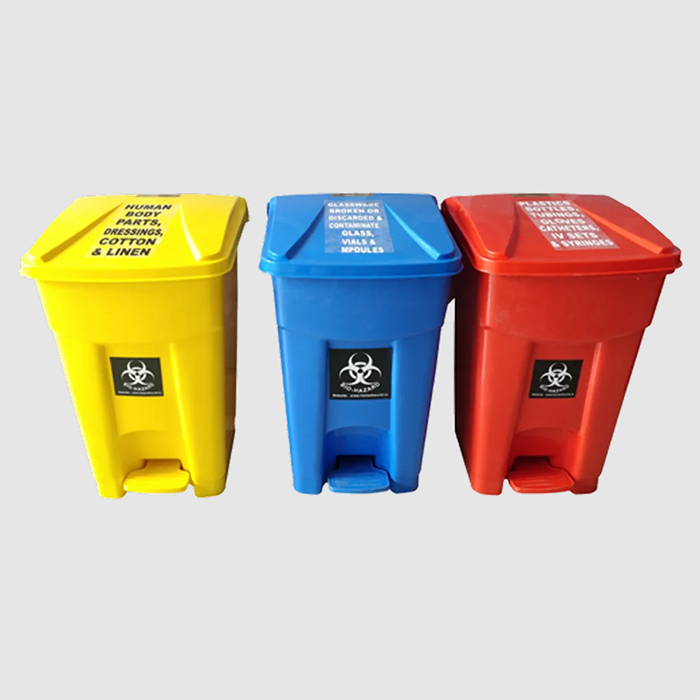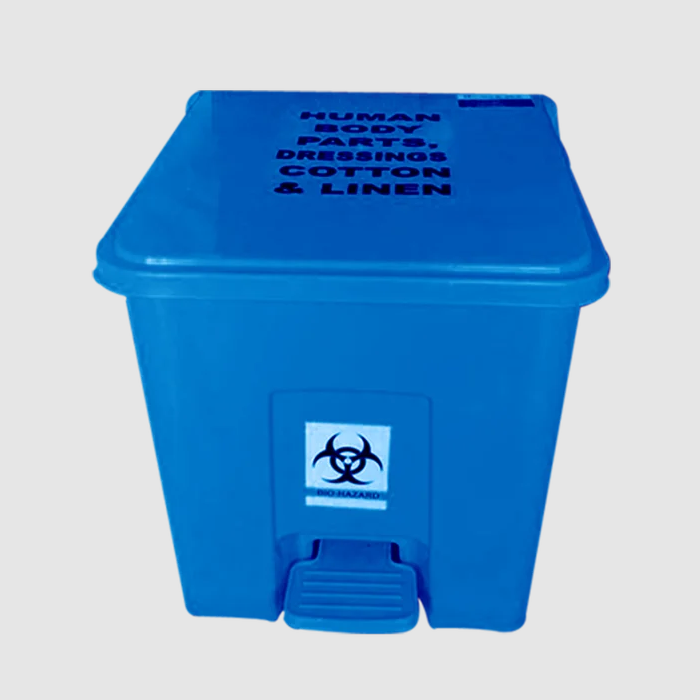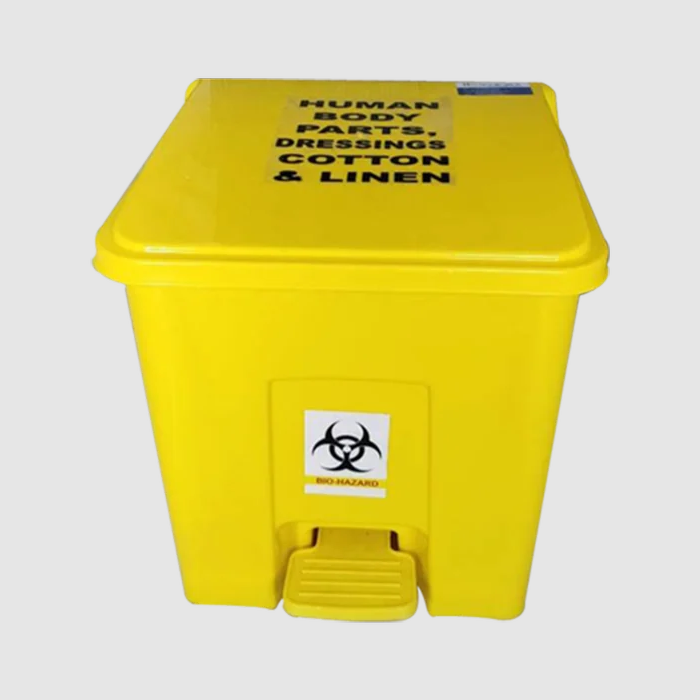
Plastic Waste Container
Medical dustbins, also known as medical waste bins, are specifically designed for the disposal of waste materials generated in medical environments, such as hospitals, clinics, laboratories, and dental offices. These bins are an essential part of infection control and waste management systems, ensuring that hazardous materials are safely and hygienically disposed of.

Lid and Seal: These bins are equipped with tight-fitting lids or foot pedals to minimize contact with waste and reduce the risk of contamination. Many are also designed to be leak-proof and odour-resistant.

Size: They come in various sizes, ranging from small bins for use in individual treatment rooms to larger containers for central waste collection in hospital wards or laboratories.
Overall, medical dustbins play a crucial role in ensuring proper waste disposal in healthcare settings, thereby preventing the spread of infection and protecting the health of both medical professionals and patients.
